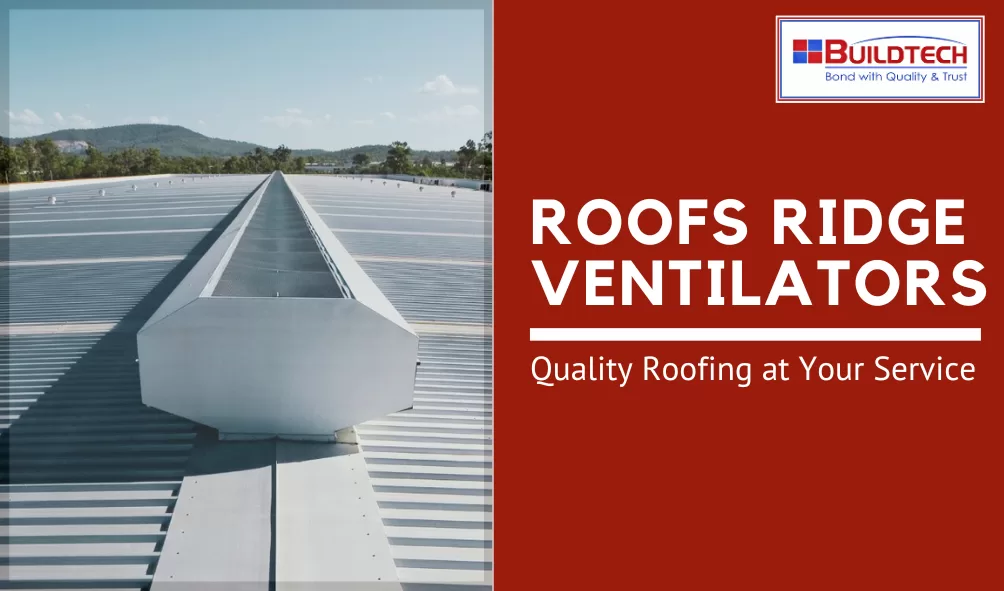Essential Insights for Homeowners, Small Business Owners, Contractors, and Builders
Ridge vents are an integral part of roof ventilation systems, yet they often remain overlooked by many homeowners and builders. This article aims to cover everything you need to know about ridge vents, their benefits, installation processes, and maintenance tips. Whether you’re a homeowner looking to enhance your roof’s performance, a small business owner needing to understand building codes, or a contractor seeking to offer better solutions to clients, this comprehensive guide will serve your needs.
What is a Ridge Vent?
A ridge vent is a type of passive ventilation system installed along the peak of a sloped roof. It works in conjunction with soffit vents located at the eaves to create a natural airflow that helps regulate temperature and moisture levels in the attic or roof space. As warm air rises, it escapes through the ridge vent, while cooler air enters through the soffit vents. This continuous cycle of airflow is crucial for maintaining a balanced environment, which can lead to improved energy efficiency and longevity of roofing materials.
Types of Ridge Vents
Ridge vents come in various designs, each with its own unique features:
- Continuous Ridge Vents: These are installed along the entire length of the roof ridge, providing uniform ventilation.
- Box Vents: Smaller, individual vents that can be placed along the ridge or other areas of the roof.
- Turbine Vents: These are not strictly ridge vents but can be used in conjunction with them. They help to increase airflow through wind power.
- Low-Profile Vents: Designed to blend into the roofline, these vents minimize visual impact while providing effective ventilation.
Benefits of Ridge Vents
Ridge vents offer numerous advantages, making them an excellent choice for any roofing system:
1. Improved Energy Efficiency
By allowing hot air to escape, ridge vents help maintain a cooler attic space. This can lead to reduced energy costs, especially during hot summers, as your air conditioning system won’t have to work as hard to cool your home.
2. Moisture Control
Excess moisture in the attic can lead to mould growth and wood rot. Ridge vents promote adequate airflow, helping to remove moisture and protect your home’s structural integrity.
3. Extended Roof Lifespan
Proper ventilation reduces the risk of heat and moisture buildup, which can damage roofing materials over time. By investing in ridge vents, you’re likely to extend the life of your roof.
4. Increase in Home Value
A well-ventilated roof is an attractive feature for potential buyers. Installing ridge vents can enhance your property’s value by ensuring that the roof remains in good condition.
5. Easy Installation
Ridge vents are relatively easy to install compared to other ventilation systems. Most roofing contractors can add them during a new roof installation or as an upgrade for an existing roof.
Installation Process
1. Assessing Your Ventilation Needs
Before installation, it’s essential to evaluate your attic’s ventilation requirements. A general rule of thumb is to have one square foot of ventilation for every 150 square feet of attic space.
2. Choosing the Right Vent
Select the appropriate type of ridge vent based on your roof’s design and your specific needs. It’s advisable to consult with a contractor or a building professional for recommendations.
3. Preparing the Roof
Ensure that the roof is clean and free of debris. If you are installing ridge vents on an existing roof, make sure to remove any shingles along the ridge where the vent will be placed.
4. Cutting the Ridge
Using a saw, cut a straight line along the peak of the roof, making sure the opening matches the dimensions of your chosen ridge vent.
5. Installing the Ridge Vent
Position the ridge vent over the opening, ensuring it sits flush against the roof. Secure it in place with roofing nails, following the manufacturer’s instructions for spacing.
6. Shingling Over the Vent
Replace the shingles over the ridge vent, ensuring a watertight seal. This step is crucial to prevent leaks.
7. Inspecting the Installation
Once the installation is complete, inspect the vent to ensure it is securely fastened and that there are no gaps where water can infiltrate.
Maintenance Tips for Ridge Vents
1. Regular Inspections
Conduct regular inspections, especially after severe weather conditions. Look for any signs of damage or blockages that may hinder airflow.
2. Cleaning
Remove debris, such as leaves or twigs, that may accumulate on or around the ridge vent. This will help maintain optimal airflow and prevent moisture buildup.
3. Check for Animal Intrusions
Ensure that no animals have nested inside the vent or that there are no signs of pests. If you notice any issues, take immediate action to resolve them.
4. Professional Maintenance
Consider hiring a professional for thorough inspections and maintenance. They can identify potential problems that may not be easily visible to the untrained eye.
Common Misconceptions About Ridge Vents
1. Ridge Vents Are Too Expensive
While the initial cost may seem high, the long-term benefits, such as energy savings and increased roof lifespan, often outweigh the initial investment.
2. Ridge Vents Are Not Effective
Some people believe that ridge vents do not provide sufficient ventilation. However, when installed correctly and in conjunction with soffit vents, they can significantly improve airflow.
3. They Only Work in Certain Climates
Ridge vents are effective in various climates. They are designed to facilitate airflow, regardless of temperature or humidity levels.
Conclusion
Understanding ridge vents is crucial for homeowners, small business owners, contractors, and builders alike. They play a vital role in maintaining a healthy roofing system, improving energy efficiency, and extending the life of your roof. If you’re considering installing ridge vents, consult with a professional to ensure you choose the right type and follow proper installation techniques. With regular maintenance, ridge vents can provide years of reliable service, making them a worthwhile investment for any property.

